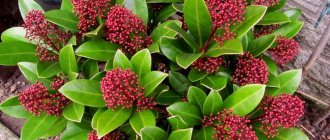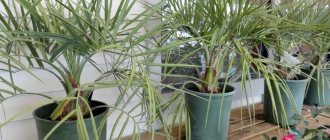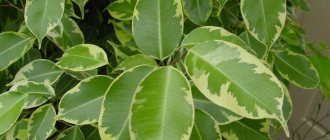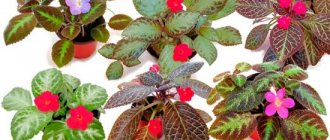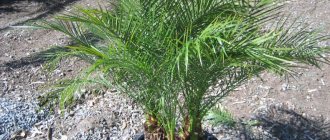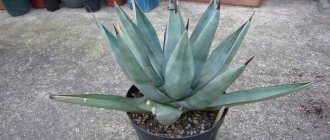Not everyone knows about the medicinal properties of the agave plant. And this is not surprising, because the culture is not very popular in our latitudes. Agave is an evergreen flower native to America. It is used to prepare alcoholic drinks, threads, and is also used in folk medicine to treat many diseases.
Peculiarities
Agave was introduced to the European continent in the sixteenth century, becoming a popular ornamental plant. Agave, which grows slowly, is grown indoors, while the fast-growing large plant is suitable for the garden.
Agave plants vary greatly in appearance, with leaf colors ranging from green to gray. Flowering occurs very rarely, it can happen once every forty or sixty years, and the flowering itself resembles a panicle with small yellow flowers that look like bells.
Agave flowers can be seen on rare occasions, only if you happen to be in the flowering period of the succulent.
Plant selection
When the question of purchasing Kalanchoe arises, there are a number of certain rules by adhering to which you can choose plants without fear of losing it in the coming months.
It all starts with an external examination of the plant and checking its mechanical strength.
The deciduous part of the plant and its stems must be elastic and have a uniform color; there should be no plaque in any form, since non-compliance with these requirements indicates Kalanchoe disease.
The plant should have an even distribution of leaves along the stem; if there are long sections of the stem devoid of leaves, this indicates injury to the plant or its diseases
One more requirement applies to decorative varieties of Kalanchoe: it is better to take a plant with a large number of unopened buds.
If the number of faded or dried buds predominates, it means that the flowering period has already passed and a new one will not come soon.
It is optimal to purchase a plant at the beginning of winter, when it begins its flowering period.
In this case, it is desirable that faded flowers and inflorescences be removed in time - this way it will have the opportunity to set new flowers.
It is mandatory at this stage to place the plant in a kind of “quarantine”, away from other plants; this will help identify its possible diseases and prevent them from spreading to other plants.
Begonia ever-flowering: description, types, planting in open ground and care, possible diseases (60 Photos & Videos) + Reviews
Home care
Proper indoor care includes creating favorable conditions for growing agave.
- Lighting – the succulent loves the sun and is not afraid of direct rays, so it is best to keep the plant on the south side.
- Agave does not care about air humidity, so dry air will not frighten it. But the plant needs fresh air and ventilation.
- When answering the question - how to water a flower, you need to know the following. It is necessary to water the succulent no more than twice every seven days. During the cold season, watering should be done no more than twice a month, and water should not be poured into the outlet.
- It is necessary to observe the temperature regime, which should not be lower than eighteen degrees.
- Agave has no special soil requirements, but it is important to remember that the soil should not be too wet. You need to use drainage and add sand to the soil.
Conditions for flowering Kalanchoe
Typically, indoor plants bloom in spring and summer. A distinctive feature of Kalanchoe is its flowering in winter. Kalanchoe flowers are small but beautiful. They form lush multi-colored (red, crimson, pink, orange, yellow, white) umbrella-shaped inflorescences that “revive” the winter landscape.
To get the most lush flowering you need:
- provide proper care;
- provide a period of rest;
- trim off faded inflorescences.
The dormant period for Kalanchoe is the end of autumn and the beginning of winter. Its duration is one and a half months. At this time, the plant rests and gains strength for flowering.
Kalanchoe flower buds are formed only during short daylight hours.
During the dormant period, the succulent needs:
- shortened daylight hours (8–10 hours);
- good illumination during the day, direct rays are desirable;
- cool (optimal temperature - 11–16 degrees);
- poor watering;
- lack of fertilizing.
In order for there to be a lot of flowers, and their colors to be as saturated as possible, when setting buds, the plant should be provided with bright light (during the daytime).
If you want to get flowering at other times of the year, you should artificially reduce the length of daylight hours. To achieve the desired result, the succulent is placed in the dark for 14–16 hours every day for a month. You can put it in a closet or pantry or cover it with a box.
If you keep flowering Kalanchoe in a cool room, the flowering time will increase.
In the absence of a dormant period, flowering may not occur or it will be sparse - with sparse inflorescences, small and inconspicuous flowers.
Transfer
Various photos of Agave will help you choose exactly the type that is suitable for growing. As for replanting, this plant grows very slowly, so it practically does not need replanting. Agave needs to be replanted when the pot can no longer accommodate the root system.
Young plants grow quickly, so it is recommended to replant them once a year. The diameter of the pot should be slightly larger than the root system for the succulent to feel comfortable.
Reproduction
Agave produces shoots that form near the trunk of the houseplant. They need to be separated with a sharp knife and then dried a little so that the offspring do not begin to rot. After this, the flower is transplanted into the soil, which should be loose.
Agave seeds can also be used for propagation, but indoor flowers of this species grow very slowly, so this method is very difficult.
For propagation, you can also use root cuttings, which must be cut so that at least one bud remains. Agave uses seed propagation in the wild.
Agave species
More than three hundred species of these plants are known. For many, it is unclear whether an agave cactus is or not. It's a succulent! They are mostly large, adapted to the harsh growing conditions in steppes and semi-deserts.
But among them there are also those that can be grown indoors; their compactness and beneficial properties make them real regulars on the windowsills of residents of various countries.
Agave blue or tequila
It, along with other species, is used to produce tequila, a Mexican alcoholic drink. It grows wild in western Mexico, at an altitude of one and a half kilometers above sea level, in the dry and hot climate characteristic of that area.
The length of the fleshy leaves can reach two meters . After just five years, the plant throws up a five-meter peduncle. The yellow flowers that bloom on it are pollinated at night by bats.
In the production of tequila, a domesticated species of this plant is used, the lifespan of which reaches 14 years. In the state of Pulque, special areas are allocated for this - potreros. To obtain juice, only the core of eight-year-old plants is used, otherwise the fermentation process will not begin. A special agrotechnical technique plays a significant role in this - the regrown shoot is broken out and planted separately, and the agave continues to grow.
Agave americana
In this species, up to 30 hard and fleshy leaves covered with a coating of wax can be collected in a basal rosette. Their length, under proper conditions, can reach two meters, and the width at the base up to 25 cm. Some forms have central yellow or white stripes on the leaves.
In fifteen-year-old plants, flowering occurs, which can last up to three weeks and fruiting, after which the agave dies. The flowers of the American agave are large, up to 10 cm long. The plant is very light-loving and does not tolerate waterlogging. Agave American yellow-edged has an even shorter stem. There are sharp spines on the tops of the leaves. In accordance with the name, its leaves are bordered with yellowish stripes, which is why the whole plant looks very decorative.
Agave American versicolor is much smaller in size, more compact, and easy to grow at home in a large pot. A distinctive feature of this species is the bright color of the leaves - their middle is yellow, the edges are green, and the spines are small. It is unpretentious, you don’t even need to water it in winter, you just need to spray it periodically.
The striped agave has a different color distribution - the leaves are green in the central part and yellow at the edges. Their apical spines are approximately 0.8 cm long. Unfortunately, this species is not suitable for growing in small apartments; sharp spines and dense, upward-growing leaves, reaching 70 cm, can be dangerous for children or pets.
Agave Attenuata Salm-Dyck
Agave retentata has a powerful stem reaching a diameter of 15 cm. It can grow up to 1.5 m , be either erect or drooping. At its top there is a rosette with 20 or more smooth-edged, bluish leaves, up to 70 cm long. The stem of the inflorescence can stretch up to 3 m, the flowers are yellow, with a greenish tint.
Agave compressed
One of the states of Mexico, Puebla, is considered the birthplace of this plant. Unlike other species, as it grows, it begins to branch. It develops multi-leaf, spherical rosettes.
The leaves themselves are curved, very pointed at the ends, with spines. On the inside you can find the keel. A very beautiful plant, looks especially good with a two-meter peduncle.
Queen Victoria Agave
Many gardeners grow this species at home, because the diameter of the entire plant does not exceed 60 cm . Each of the leaves is no more than 15 cm in length, and their width is 5-7 cm.
The leaves are very decorative, dark green in color, with lighter oblique lines across the entire surface. On the reverse side there is a keel with a horny line, and at the ends there are several spines, among which one, the longest, stands out.
Agave Tumi
This plant is quite unusual, since under fairly good conditions it begins to actively grow and form turf. It is quite small, with narrow leathery green leaves, which are decorated with a lighter border and unusual white threads. There are spines up to 1 cm in size on the tops of the leaves. It also looks like filamentous agave.
Agave parasica
Very compact appearance, bush diameter no more than 60 cm. Has gained great popularity among succulent lovers . As a domestic flower, agave has spread throughout the world.
Wide waxy leaves, ovoid in shape and bluish in color, end in brown spines.
Agave brown-yellow
Despite the fact that the plant differs from other species in its short stem, this does not in any way affect its decorative properties. On the contrary, the diameter of a large plant is about two meters , and the leaves can grow up to 120 cm - thanks to this, it looks great in flower beds and in special vases.
But you need to take care of it with some caution - there are thorns on all the edges of the leaves, and real thorns on the tops.
Agave potatorum
The rosette size of this succulent rarely reaches 50 cm. Most often, the diameter of the plant is no more than 25 cm . The leaves have a spatulate shape with a jagged, lighter edge. They are about 10 cm wide, and a dark-colored spine grows at the end of each.
Agave is scary
When looking at this species, you can understand what the name of the plant is associated with. Indeed, she looks quite intimidating. The strong, serrated edges of the leaves have a horny edge. And although the length of the leaves is no more than 40 cm, the succulent grows a flower stalk of about four meters.
Agave Funca
This slow-growing, stemless agave is a real beauty. The plant is quite undemanding to soil quality. Over the years, it forms a large rosette, the size of which can reach up to 2 m. The leaves are long, with a waxy coating and thorns along the entire edge. The color is greenish-blue. Some species may have lighter threads. The height of the peduncle can reach up to 10 m. After the seeds ripen, the plant dies, but a lot of root shoots remain after it.
Diseases and problems
- If an agave's foliage turns yellow, it means it lacks light or mineral fertilizers. This is also affected by too dry soil and high air temperatures.
- The edges of the leaves turn yellow from an excess of calcium.
- If cobwebs are visible on the leaves, this means that the plant has been attacked by spider mites.
- Wrinkles on the leaves indicate that the Agave plant has been exposed to temperature changes.
- If the succulent turns yellow completely, this indicates too much moisture in the soil, or, conversely, the soil is too dry. This may also indicate that the agave is going dormant.
- The most dangerous pests for agave are mites and scale insects.
Application in medicine
In medicine, the American agave is most often used, which has medicinal properties. It is a natural sweetener and is often used in diets and for dietary nutrition. Agave tastes like honey, and the juice of the plant has a healing effect on the digestive system and stomach.
The plant can also be used as compresses and lotions; it helps heal purulent wounds and abscesses, and also perfectly heals various skin injuries, including bruises and scratches.
The succulent is also famous for secreting special substances that have antimicrobial effects. By inhaling these substances, the human immune system is strengthened, and the air is naturally purified.
In the description of the flower it is also worth pointing out that agave destroys harmful insects if placed in a room in the amount of one or two flowers.
Useful properties of succulent
From a pharmacological and chemical point of view, not everything is known about agave. Despite this, traditional medicine has long used it as a proven medicine. Culture-based preparations contribute to:
- Soothing the pain
- Reduce fever
- Disinfection
- Expectoration of mucus
- Relieving inflammation
- Improving metabolic processes
- Removing excess fluid from the body
- Wound healing
- Normalization of the digestive system
Agave can be used as a natural and effective contraceptive. Traditional healers consider the plant an effective medicine for:
- Furunculosis
- Radiculitis
- Rheumatism
- Do not lie
- Dyspepsia
Agave is not only a medicine, but also a culinary ingredient. Edible flowers are added to salads. Juicy foliage is a storehouse of useful substances. You can eat it. The succulent stems are fried. An alcoholic drink (tequila) is made from blue agave. To produce it, you only need a rhizome similar to a pine cone. From 7 kg of raw materials 1 liter of alcohol is obtained.
The juice of the plant also goes into use. Sugar, honey and wine are made from it. Agave sweetener does not cause fluctuations in blood sugar levels. It can be added to baked goods: the syrup will not change the usual taste and texture of the dish. This substitute is almost twice as sweet as traditional sugar. It is not very thick, which allows you to carefully, drop by drop, introduce it into the dough.
In tropical areas, agave is grown specifically for its fiber.
It serves as a raw material for the production of ropes, ropes, twines, packaging and coarse fabrics. The waste doesn't go to waste either: it turns into wrapping paper. Agave is simply a versatile plant with many medicinal, culinary and industrial uses.
State of rest
Growing at home means the agave is in a dormant state. The succulent goes into a dormant state in the fall, this period lasts until the spring season.
In this state, the agave must be kept at a low temperature from zero to ten degrees, only in this way will it feel comfortable and be able to emerge from its suspended animation.
If the temperature is from zero to ten degrees, the succulent does not need to be watered, but if it is higher, then watering is necessary, but very rarely, this will help prevent the soil from drying out.
Interesting Facts
Mexicans use the agave plant to make alcoholic drinks. The most famous of them are tequila and pulque. Agave fibers are used to weave strong ropes, nets for fishing, and lasso.
The pride of Mexico is the blue agave, from which the famous alcohol is made by distilling its juice from the core. Agave plantations in this country are included in the UNESCO World Heritage List.
Tequila and pulque are made from a succulent that is at least twelve years old. They have learned to make fabric and wrapping paper from its tough fibers, in addition, the plant is often used in modern medicine for the use of creams, ointments and other medicines.
How to make agave medicine at home
Infusion for the treatment of stomach, liver
To prepare an infusion that helps with various hepatitis, ulcers, gastritis, you need to take a fresh agave leaf in the amount of 50 g. Finely chop it with a knife. Pour boiling water in an amount of 200 ml. Leave at room temperature for 5-6 hours. The infusion is taken three times a day before meals.
At one time, you need a tablespoon of the resulting product. If it is not possible to prepare an infusion from fresh leaves, you can air dry the agave leaves. Grind them into powder and take half a gram for the same diseases three times a day.
Agave for bronchitis, tuberculosis and pneumonia
To prepare a remedy for the treatment of pulmonary diseases you need:
- 20 ml fresh agave juice
- 20 g of internal rendered fat, pork or goose will do
- 50 g cocoa powder
- 100 g each of honey and butter
All components are thoroughly mixed. Drink the product twice a day. add a tablespoon to a glass of milk and drink the resulting mixture.
Treatment of boils with agave
To retract pus and relieve inflammation, a piece of agave leaf is cut lengthwise and placed with the inside on the abscess. Secure with a bandage. As it dries, the sheet is replaced with a new one until the abscess is cleared of pus. When using agave leaf to treat abscesses, do not forget about allergies to its juice.
In addition to its medicinal properties, agave serves as a raw material for the production of various alcoholic drinks, many of which are popular all over the world, primarily pulque and tequila. In the national economy, fiber is obtained from the leaves and very strong ropes and ropes are knitted.
Video about transplanting agave:


